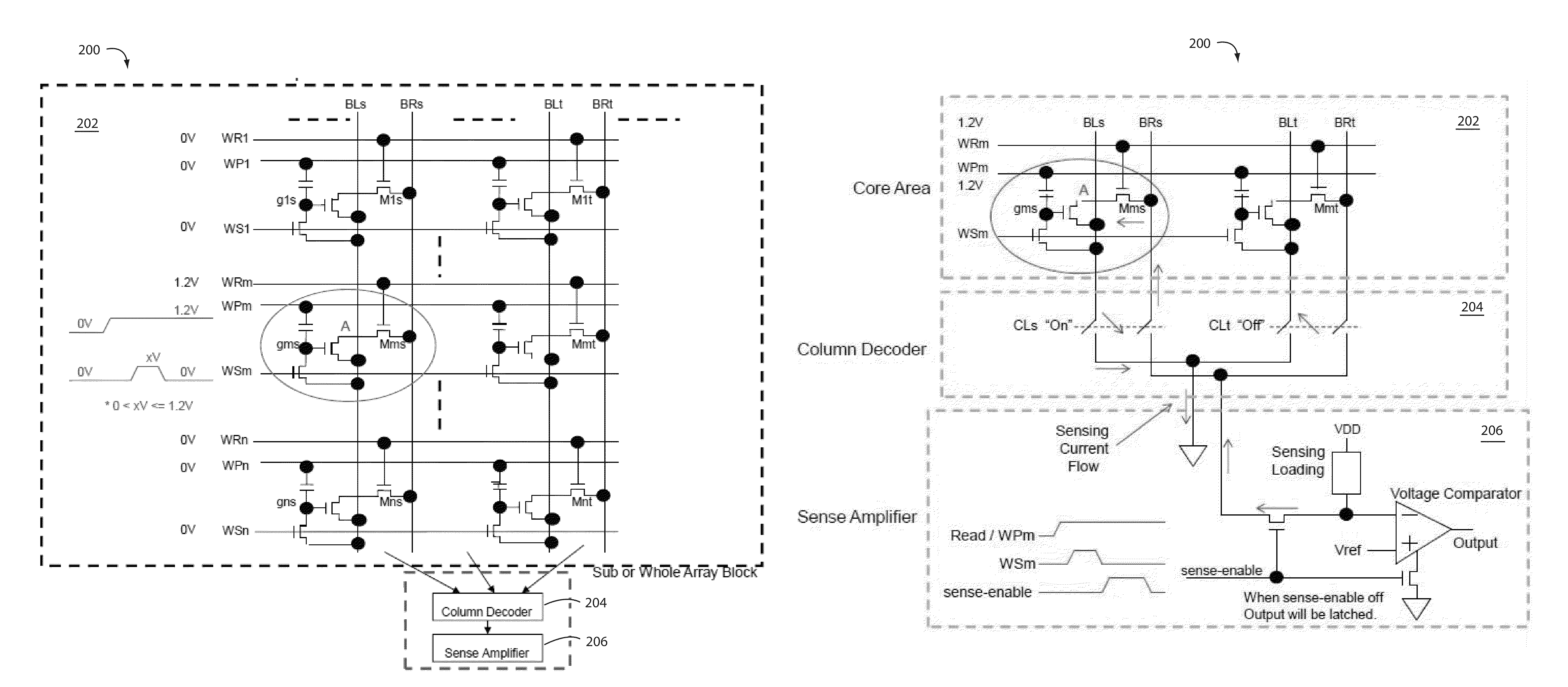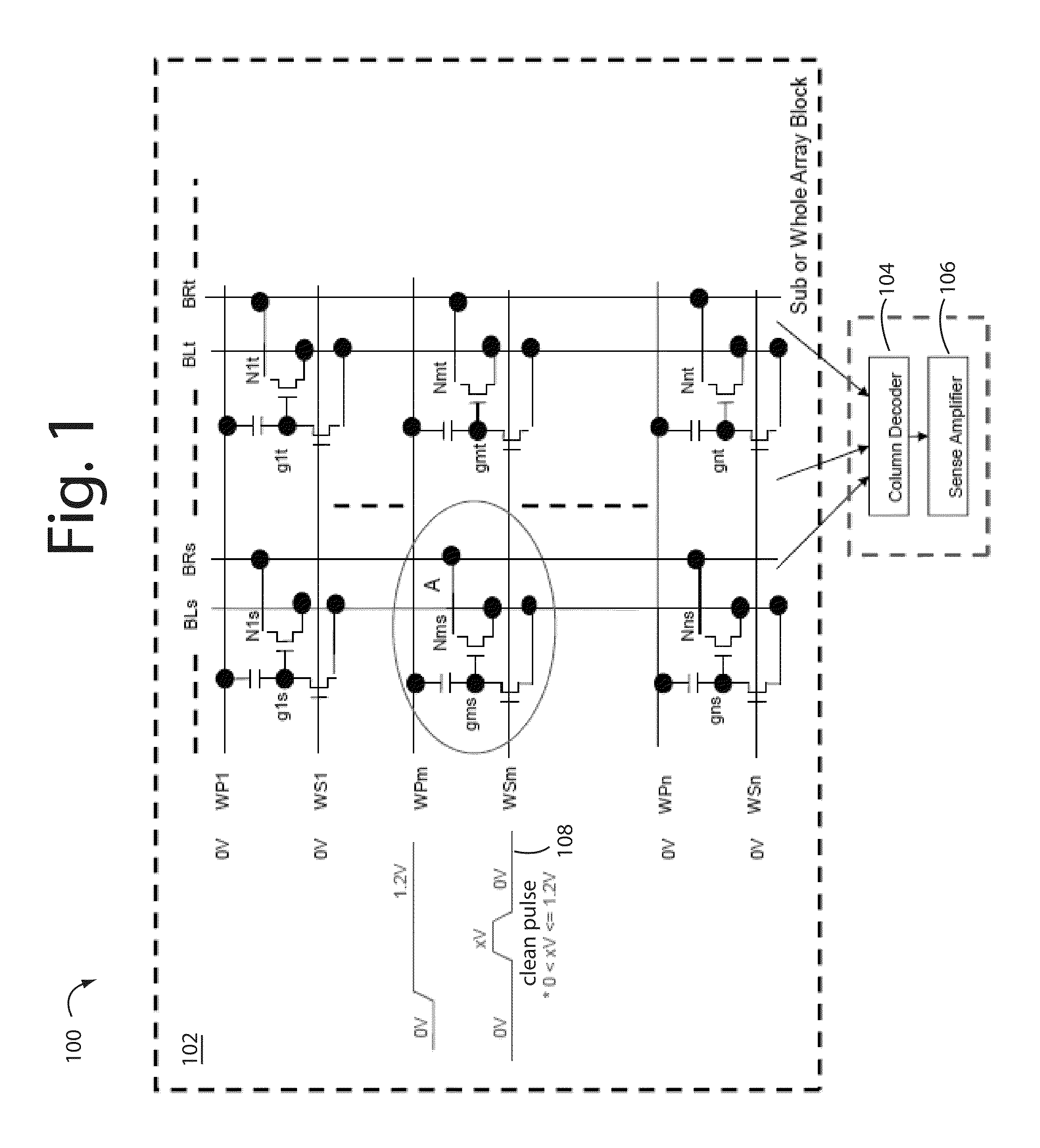Spurious induced charge cleanup for one time programmable (OTP) memory
a one time programmable and purious charge technology, applied in static storage, digital storage, instruments, etc., can solve the problems of increasing the layout size and cost of memory, weak rotation of the transistors, etc., and achieve the effect of substantially reducing the layout size of the core area and exceeding the operational power requirements
- Summary
- Abstract
- Description
- Claims
- Application Information
AI Technical Summary
Benefits of technology
Problems solved by technology
Method used
Image
Examples
Embodiment Construction
[0012]FIG. 1 and Voltage Table I represent a memory 100 comprising an array block 102 and core cells. Each core cell is based on two transistors (N) and one floating node comprising a capacitor C and gate g.
[0013]
VOLTAGE TABLE ICellV(WP)V(WS)V(BL)V(BR)ProgrammingA SW / SB5.5V2.5V0VfloatingB SW / UB5.5V2.5V2.5VfloatingC UW / SB2.5V0V0VfloatingD UW / UB2.5V0V2.5VfloatingReadA SW / SB1.0V0V0VV sensing +B SW / UB1.0V0VfloatingfloatingC UW / SB0V0V0VV sensing −D UW / UB0V0Vfloatingfloatingsensing line
Where the voltage values can be + / − by 10%˜50% for a 0.13 μm CMOS process, depends on the process and detailed implementation of the decoding circuits. In an 0.18 μm process, these voltages will be correspondingly higher.
[0014]In memory array block 102 the core cells are arranged in rows (m) and columns (s) with internal bit line (BLs) and bit read (BRs) interconnections to corresponding column decoders and sense amplifiers, and write pulse line (WP) and write sense line (WS) row (m) interconnections. Each ...
PUM
 Login to View More
Login to View More Abstract
Description
Claims
Application Information
 Login to View More
Login to View More - R&D
- Intellectual Property
- Life Sciences
- Materials
- Tech Scout
- Unparalleled Data Quality
- Higher Quality Content
- 60% Fewer Hallucinations
Browse by: Latest US Patents, China's latest patents, Technical Efficacy Thesaurus, Application Domain, Technology Topic, Popular Technical Reports.
© 2025 PatSnap. All rights reserved.Legal|Privacy policy|Modern Slavery Act Transparency Statement|Sitemap|About US| Contact US: help@patsnap.com



